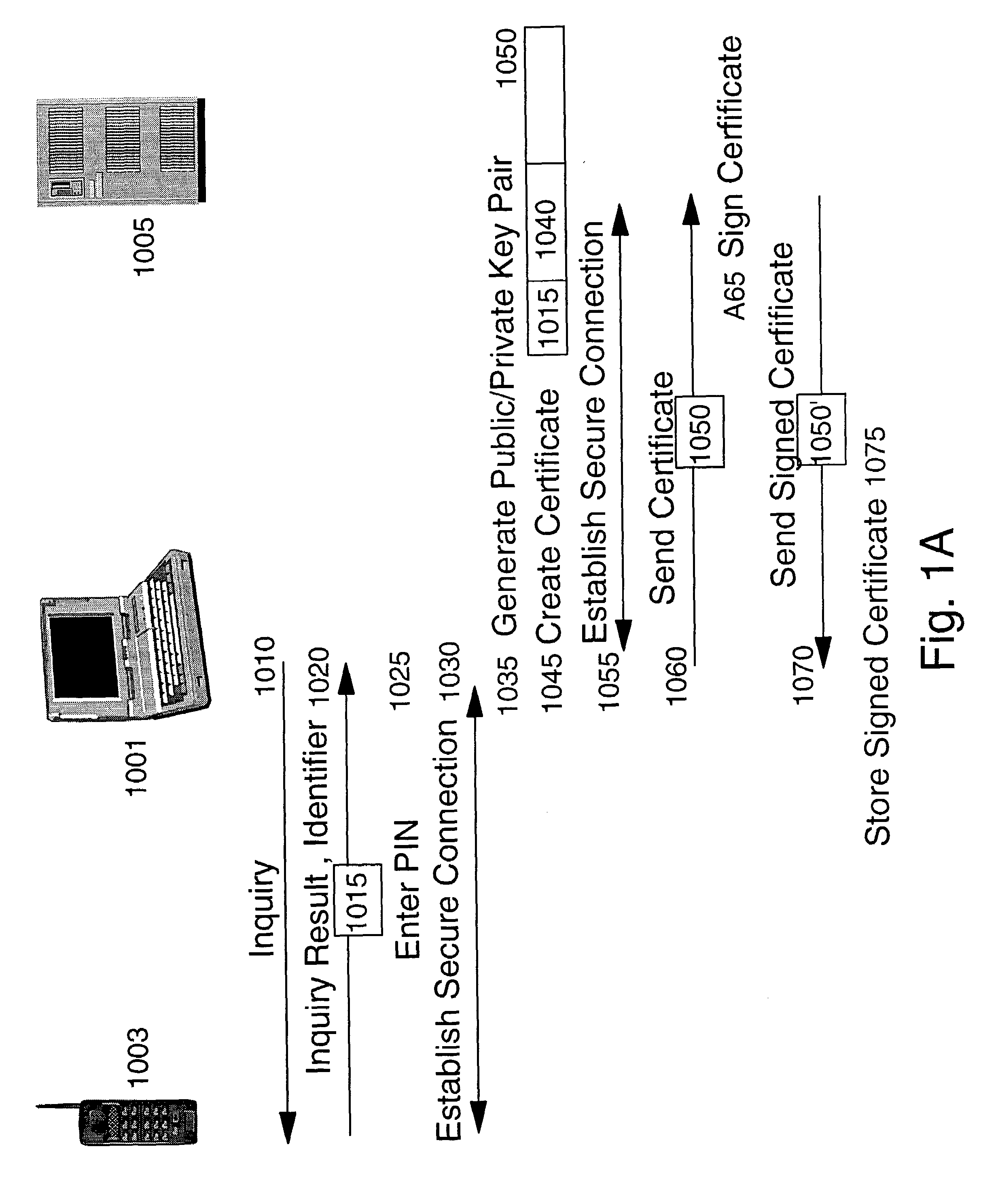Method and apparatus for efficiently initializing mobile wireless devices
a mobile wireless and efficient technology, applied in the field of mobile wireless devices efficiently initialized, can solve the problems of inflexible pre-configured secrets, inability to easily be modified, and paired with other devices, and achieve the effect of eliminating the inflexibility of pre-configured secrets, reducing the amount of administrative overhead for initializing, and efficient administration of secure devices
- Summary
- Abstract
- Description
- Claims
- Application Information
AI Technical Summary
Benefits of technology
Problems solved by technology
Method used
Image
Examples
Embodiment Construction
[0038]The preferred embodiment of the present invention is presented to provide sufficient enabling information such that the reader may implement the present invention. It is not meant to limit or restrict the invention in any way.
[0039]The designers of the Bluetooth specification have not prohibited performing authentication and encryption at the baseband (or physical) layer, but current methods for initializing such authentication and encryption have unacceptable characteristics for mobile computers especially in an enterprise context. There is, as yet, significant confusion as to how to implement security (i.e., authentication, encryption, access control, and the administration of the same) efficiently in an enterprise. The present methodology of defining who can interact with whom and which ‘shared secrets’ (such as PIN numbers, cryptographic keys, etc.) will be used to secure the connections between specific devices, users, applications and groups does not yet exist.
[0040]In e...
PUM
 Login to View More
Login to View More Abstract
Description
Claims
Application Information
 Login to View More
Login to View More - R&D
- Intellectual Property
- Life Sciences
- Materials
- Tech Scout
- Unparalleled Data Quality
- Higher Quality Content
- 60% Fewer Hallucinations
Browse by: Latest US Patents, China's latest patents, Technical Efficacy Thesaurus, Application Domain, Technology Topic, Popular Technical Reports.
© 2025 PatSnap. All rights reserved.Legal|Privacy policy|Modern Slavery Act Transparency Statement|Sitemap|About US| Contact US: help@patsnap.com



